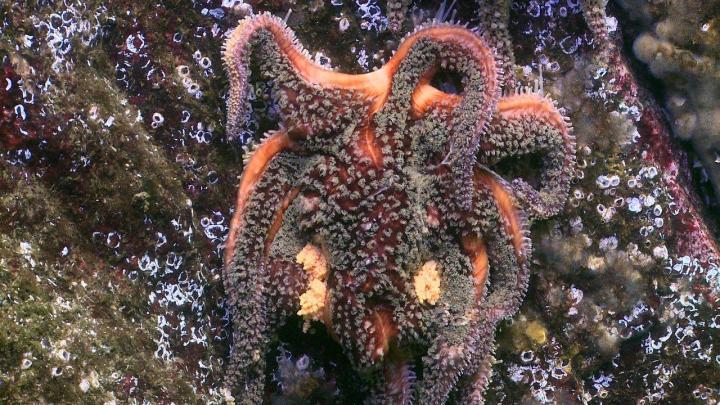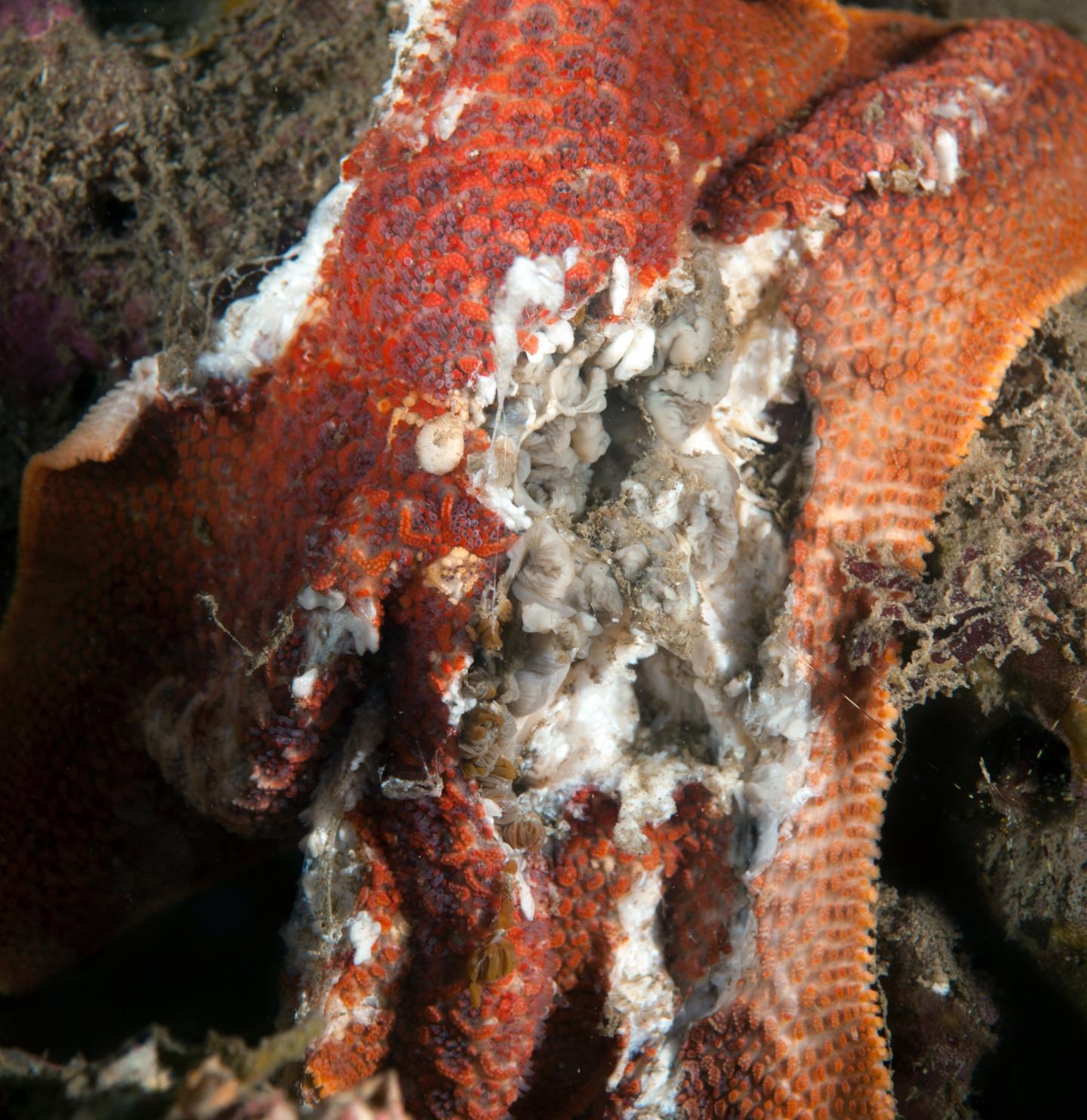November 17, 2014--Museum biological collections are the records of life on Earth and as such, they are frequently used to investigate serious environmental issues. When public health officials were concerned about the levels of mercury in fish and birds, for example, scientists studied museum specimens to assess historical changes in mercury contamination. Eggs in museum collections were analyzed to establish the connection between DDT, thinning eggshells, and the decline in bird populations. And now, specimens from the Natural History Museum of Los Angeles County (NHM) have helped explain the mysteriously sudden appearance of a disease that has decimated sea stars on the North American Pacific Coast.
In a paper published Monday, November 17, 2014 in the journal Proceedings of the National Academy of Sciences, Cornell University microbiologist Ian Hewson and colleagues identify the Sea Star Associated Densovirus (SSaDV) virus as the microbe responsible for Sea Star Wasting Disease (SSWD). NHM Curator of Echinoderms Gordon Hendler and Collections Manager Cathy Groves, along with scientists from universities and aquariums along the coast (including NHM neighbor, the California Science Center), collaborated in the study.
Since June 2013, the largest die-off of sea stars ever recorded has swept the Pacific Coast. At least 20 different species of sea stars have been affected -- including iconic species like the "ochre star" and the multi-armed "sunflower star" -- and many populations of sea stars from Southern Alaska to Baja California have already disappeared.
Their large-scale disappearance is anticipated to have a serious and long-lasting ecological impact on coastal habitats, because sea stars are voracious predators, with a key role in regulating the ecology of the ocean floor.
Museum samples prove that the virus has existed at a low level for at least the past 72 years -- it was detected in preserved sea stars collected in 1942, 1980, 1987, and 1991. The study suggests the disease may have recently risen to epidemic levels because of sea star overpopulation, environmental changes, or mutation of the virus.
The study detected the virus on particles suspended in seawater, as well as in sediment, and showed that it is harbored in animals related to sea stars, such as sea urchins and brittle stars. Likely it can be transported by ocean currents, accounting for its rapid, widespread dispersal in the wild. Since the die-off began, the disease has caused a mass mortality of captive sea stars in aquariums on the Pacific Coast, although it did not spread in aquariums that sterilize inflowing seawater with UV light.
"There are 10 million viruses in a drop of seawater, so discovering the virus associated with a marine disease can be like looking for a needle in a haystack," Hewson said. In fact, the densovirus is the first and only virus identified in sea stars. However, its discovery will enable scientists to study how the virus infects sea stars and trace it in the ocean. Further research could reveal how the virus invades its host, why kills some sea stars, and why other species are unaffected.

This is a SSWD-affected star. The fatal disease leads to behavioral changes, lesions, loss of appendages, and disintegration.
(Photo Credit: Photo by Neil McDaniel.)
Research might also identify factors that triggered the ongoing plague and help to predict or forestall similar events in the future.
"A recent publication highlighted examples of innovative studies for which museum time-series were integral in identifying responses to environmental change and bemoaned general decline in the growth of museum collections," said NHM's Hendler. "Fortunately, we bucked the trend and intentionally collected common, local species of sea stars, which made it possible to detect SSaDV in specimens from NHM!"

This is another SSWD-affected star.
(Photo Credit: Phil Garner)